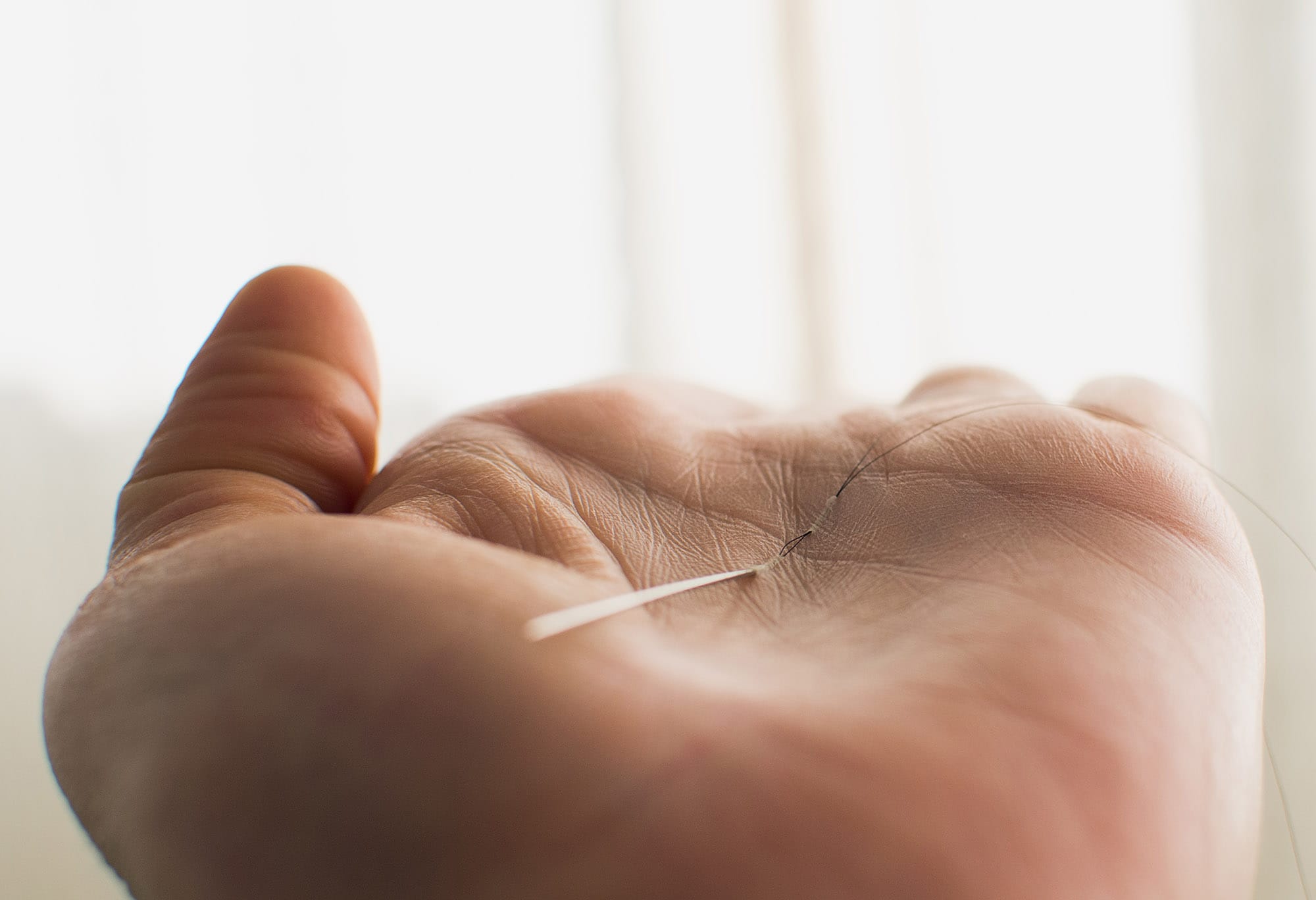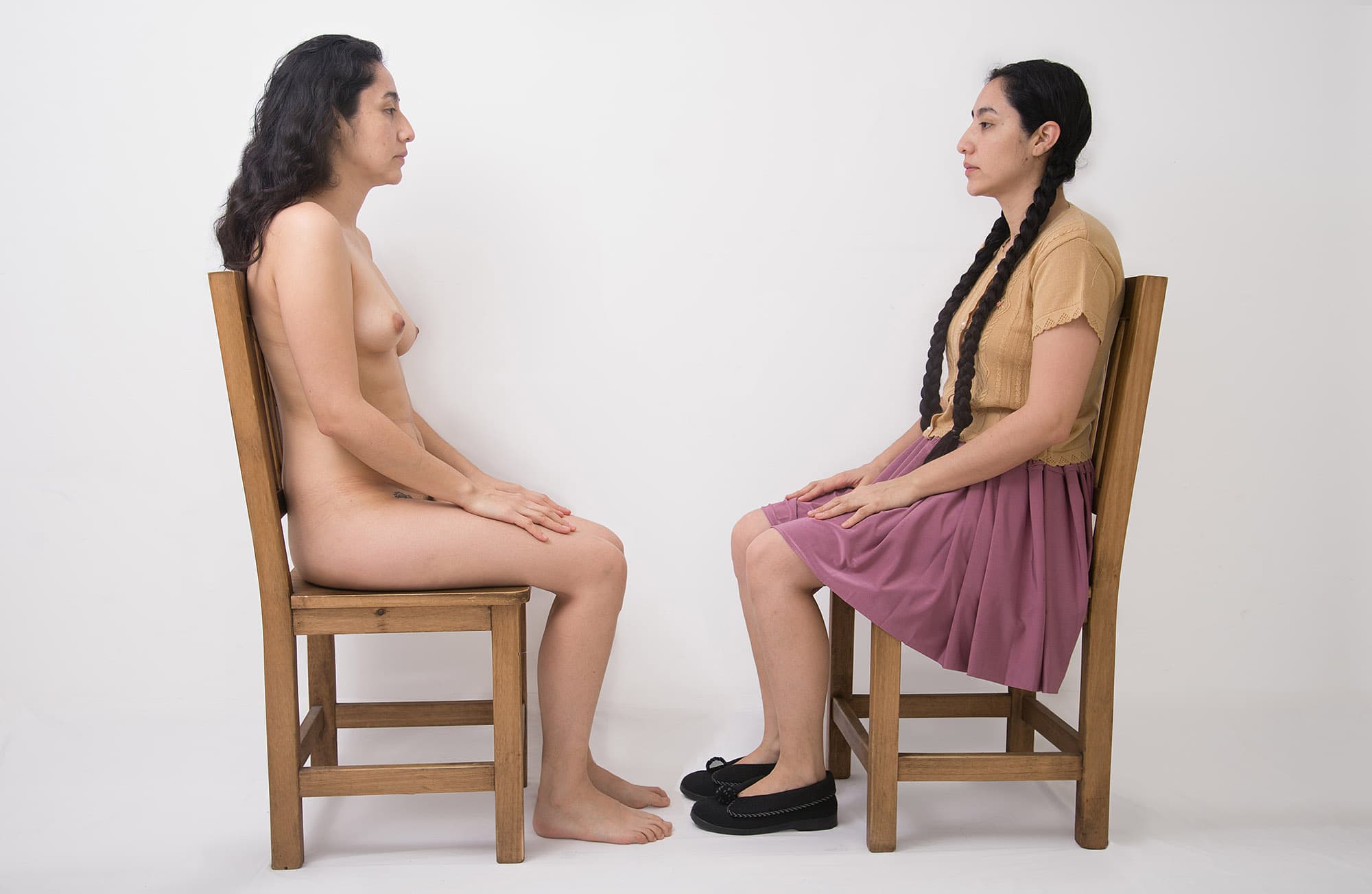
Becoming a Chola again
In “Linaje,” artist Gabriela Olivera Hidalgo examines the women’s experiences in her family. At the center of her concerns is the need to reconnect with the Andean identity that her environment has repressed. In doing so, she seeks to heal the wounds that racism and machismo in Bolivian society have opened in the bodies of her predecessors.
By Alonso Almenara
“Photography is like a healing ritual,” says Gabriela Olivera Hidalgo. In “Linaje,” a project included in the exhibition “Borrador de un Cuerpo Intervenido” (curated by Ana Casas Broda and Gisela Volá at ArtexArte in Buenos Aires in 2018), the Bolivian visual artist set out to find a repressed part of her own identity to heal the wounds of her maternal lineage: her two Chola grandmothers, Clotilde and Valentina; and her mother Hortencia, “the daughter of that Chola who went to the city.”
“My grandmother Valentina was fifteen when she got married,” Olivera says. “She didn’t even know how babies were born.” The artist explains that it was an arranged marriage: Valentina could not study, as she devoted all her time to raising her seven children. She was widowed at thirty. In her second marriage, she married a violent man who abused her. “There were too many things I didn’t want to repeat.”
But it was not just a simple rejection. In reality, Olivera felt the need to connect in some way with those experiences that she still didn’t understand well. She intuited that by investigating her family history, she could begin to heal, in her own body, the wounds that a racist and patriarchal society opened on the bodies of the Cholas who preceded her.
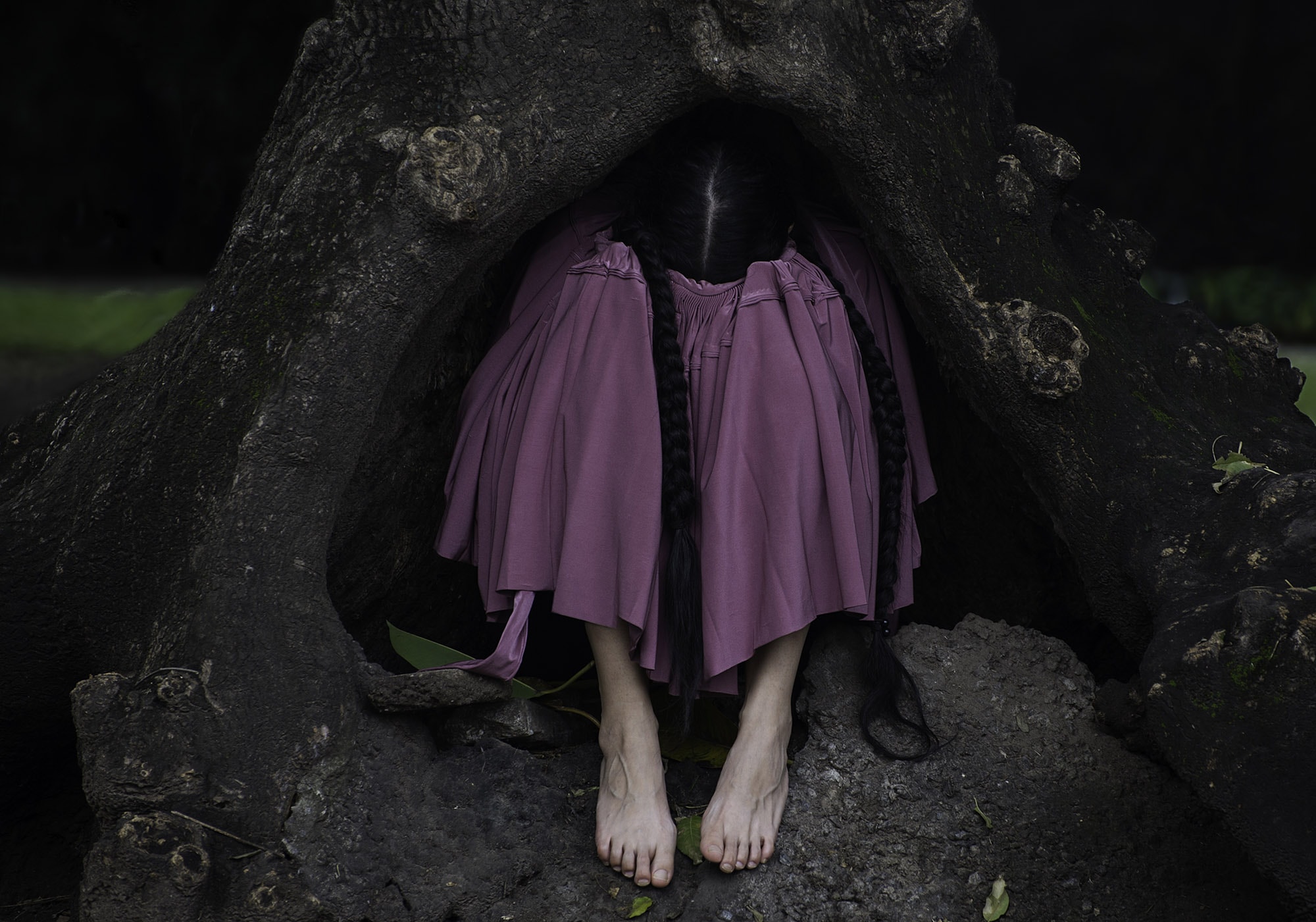
The photographic work in the “Linaje” project began in 2016 with a ceremony. “I set up a ritual that is usually set up in November, on All Saints’ Day. What is done is to prepare a table with several elements: food and clothing that the person you want to remember liked. There is this belief that the dead person returns to life on that day and is served all the dishes you have left, the things they liked.” For the artist, that day, her grandmother Valentina, who had died years earlier, returned to the family home. And Olivera received her in her own body: she became one with her.
Memories of Choledad
Although most Bolivians have Andean family roots, “culturally, the Chola and the indigenous person are still seen as inferior,” says the artist. “There is racism that one would think has disappeared, but that has emerged with more force in recent years, becoming the central element in the political conflicts that Bolivia is going through.”
For Olivera, the Chola is the unrecognized foundation of Bolivian society, “the pillar of the country’s economy.” “It is important and valuable to emphasize that, but to recognize this figure as part of my history.” This is a challenging task, given that her parents, who speak Quechua, never taught her. Her mother left the countryside, like many other Bolivian women of her generation, “with the idea that everything is better in the city.” In that gesture, the intention was to erase a Choledad that hurts, seen as a mark of inferiority for a long time.
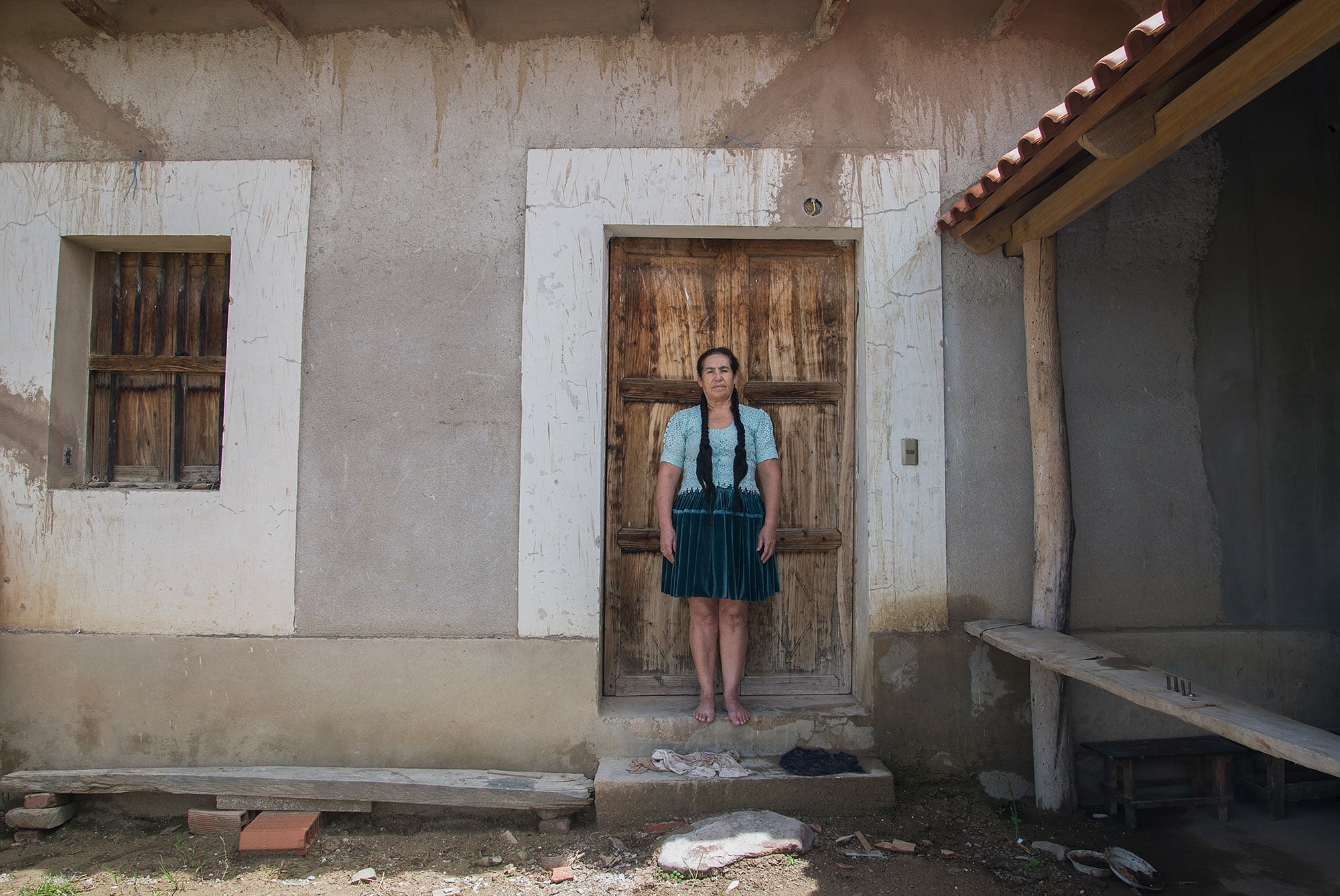
“I started exploring hair because I felt it was the first thing that connected me to them,” says Olivera. “Maybe it’s something full of live: the long braids, the black hair so characteristic of my grandmothers. Hair was like a thread that sutured those wounds that had not healed and united my history, all my lineage.”
Olivera convinced her mother to accompany her on this journey: in the photographic series, both appear dressed as her grandmother Valentina used to dress, affirming in unison what was once hidden, silenced. “I remember I dressed up as a Chola in Argentina and went out like this on the streets, with the idea that Valentina couldn’t travel,” she says. “So I took her with me to know other realities.”
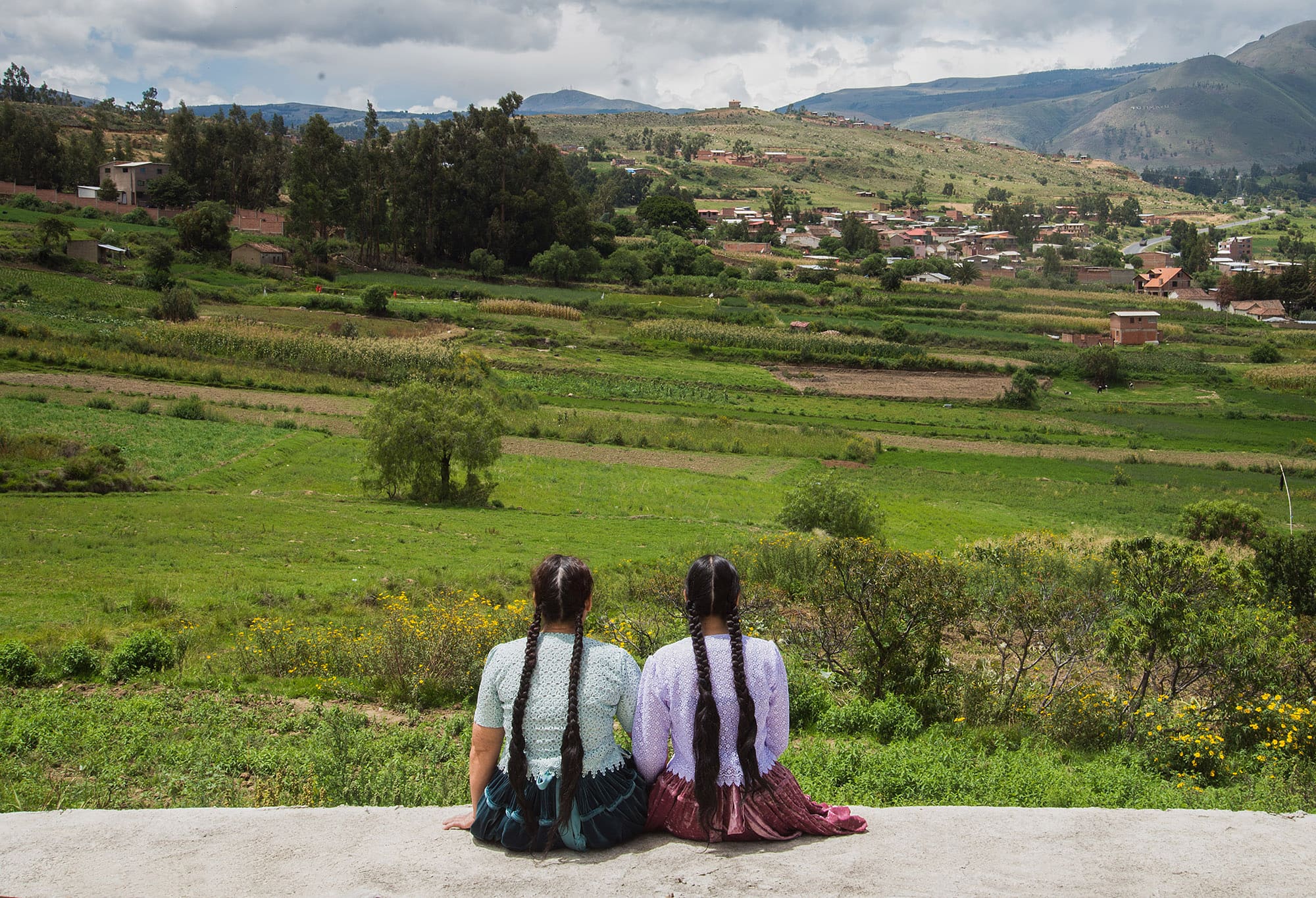
That is why Olivera’s relationship with the Cholo lineage of her family is not only one of pain and healing, but also curiosity and admiration. “I want to recover many things from that legacy: customs, natural medicine, for example,” concludes the artist. “My grandmother had that knowledge, that wisdom. The Quechua language is something I don’t want to be lost in my family.”
